What To Plant In March
Are you wondering what to plant in March? I can hardly wait to get my hands in the soil; what about you? Now that we have moved north, we must start with new raised gardens.
It will be easier to grow food here, where the weather is more agreeable to gardening. Redoing everything this year will be a lot of work and expense, but I love to garden and go outside in the sunshine.
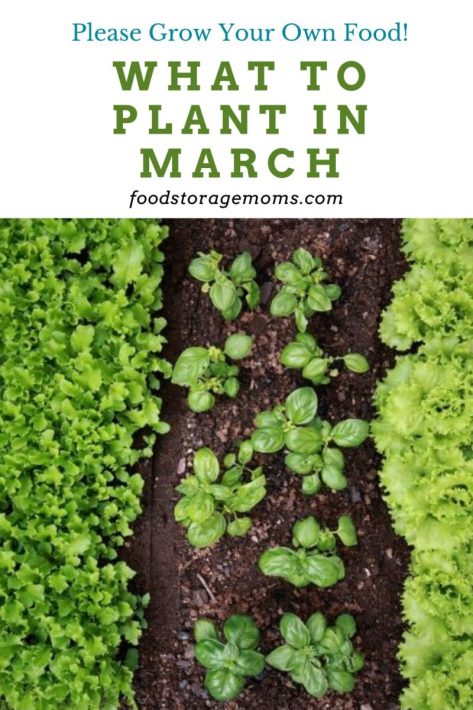
You may want a cold frame to protect your plants from frost or high winds. This is where I buy my garden seeds: SeedsNow
My friend Rick Stone from Our Stoney Acres is a gardening expert year-round. He even shows how to make a COLD FRAME!! He lives where it snows in the winter, so you know.
I highly recommend these for seedlings: CowPots and Organic Seedling Soil. This way, you plant your seeds and place the CowPots in your garden when the temperatures are correct. Check here to find your zone. Note: With the effects we’re seeing due to climate change, the zone information we’ve always relied upon has changed. If you have any questions, I suggest you check with your state’s extension service to see how they might classify your location.
How I store my garden seeds:
Plastic Photo Container and Label Maker
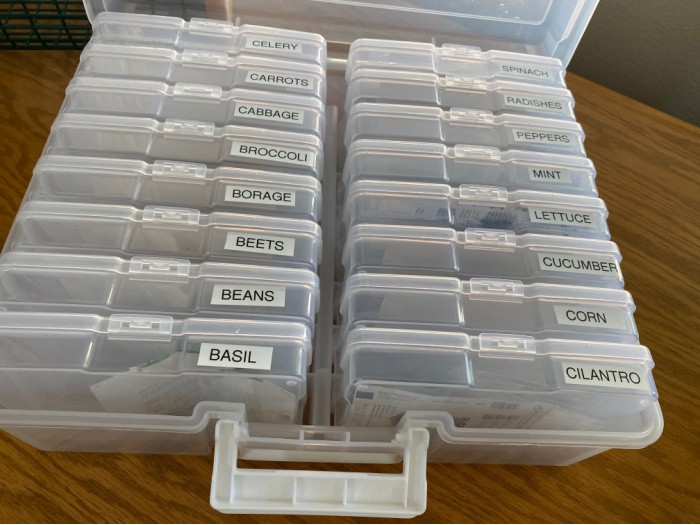
What Does The Term pH Level Mean?
Are you wondering what the term pH level means in gardening? Each plant prefers a different level of acidity to grow the very best harvest.
Therefore, you can adjust the pH of your soil by adding lime or sulfur to raise or lower it, depending on its needs.
You can have your soil tested, possibly by your state extension service, or try to do it yourself with a soil tester. pH Tester
Soil Amendments
Improve your garden’s soil by adding a few inches of organic matter, such as grass clippings, decaying leaves, and manure. When your garden’s soil is fertile, your flowers and vegetables will grow better, so that should be more than enough reason to take this step.
We first need to pull any growing weeds since the last time you turned over the soil. We should also dig out any leftover crops you missed the last time you harvested.
Turn the soil several times and add the following amendments if necessary. You may remember that I have raised garden beds because I don’t want to bend down as far to work my garden anymore.
I’m adding two more raised beds this year because I urgently need to raise more food for my family. This is my favorite soil. I would check to see if you can buy it where you live. It’s fabulous!!
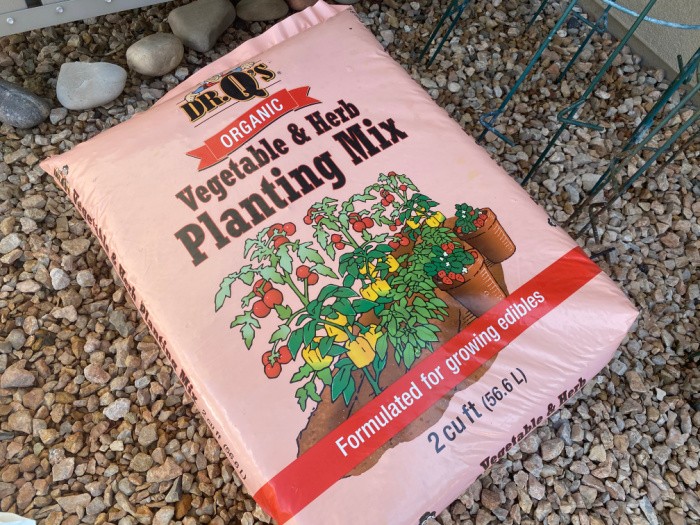
Soil Builder Earthworm Castings
What to Plant in March By Zone
I recently realized I mostly posted about what to plant each month based on where I live, but not everyone lives here! So, I also wanted to share with you what to plant by zone. Remember that climate change has changed our weather; therefore, zones are not always accurate.
Zone 1-2
There isn’t much you can plant in zones 1 and 2 during March, but you can start a few things. Here are some you can try:
- Asparagus
- Celery
- Chives
- Endive
- Leeks
- Radishes
Zone 3
It’s probably still pretty chilly in Zone 3 during March, but there are additional items you can start planting. You can start with the following:
- Onions
- Tomato
- Cauliflower
- Cabbage
- Brussels Sprout Seeds
Zone 4
Zone 4 is much like Zone 3, so you can plant the same things and a few more. Here is a list:
- Peppers
- Egg Plants
- Onions
- Tomato
- Cauliflower
- Cabbage
- Brussels Sprout Seeds
Zone 5
In Zone 5, some things need to start indoors, whereas others can go straight into the garden. However, you will want to use cold frames to protect against any unexpected frost in Zone 5.
Tomatoes, peppers, and eggplants must be started indoors and transplanted into your garden at the end of March or in early April. Here is a list of things you can plant outdoors:
- Potatoes
- Peas
- Lettuce
- Radishes
- Carrots
Zone 6
It may not be the ideal time to start planting in Zone 6. However, if the weather is mild, you can plant roses, trees, and shrubs. Additionally, the following can be moved outdoors:
- Broccoli
- Cabbage
- Cauliflower
Zone 7
In Zone 7, the weather is milder, so you have a few more options for what you can plant in your garden. Be sure to plant the following around mid-month:
- Carrots
- Beets
- Kohlrabi
- Radishes
- Lettuce
- Turnips
- Swiss Chard
Additionally, you can transplant the following from indoors to outdoors:
- Onions
- Shallots
- Broccoli
- Cabbage
- Cauliflower
- Collards
- White potatoes
- Asparagus
- Chives
- Rosemary
- Thyme
Zone 8
Nights can still be chilly in Zone 8, so ensure you have row covers and windbreaks on hand. Plant the following in March:
- Spinach
- Turnips
- Mustard
- Beets
- Carrots
- Broccoli
In mid-month, you can begin planting the following:
- Corn
- Tomatoes
- Squash
- Peppers
- Cucumbers
Zone 9
Like Zone 8, you can plant quite a bit in Zone 9 because it is warm in March. It may be cool in the evenings. But, for the most part, you don’t have to worry much in zone 9. Here’s what you can plant:
- Cabbage
- Broccoli
- Spinach
- Radishes
- Asian Greens
- Lettuce
- Parsley
Additionally, you can move the following from indoors to outdoors in mid-March:
- Tomatoes
- Peppers
- Eggplants
Zone 10
It is pretty warm in Zone 10 during March. So, you can plant warm-weather plants at this time. Here is a list of what you can plant:
- Okra
- Sweet potatoes
- Mustard
- Collard greens
- Cucumbers
- Melons
What To Plant In March
I’m starting my seedlings right now inside my home. I have never bought the lights people use to keep their plants warm, and it always seems to work out.
I have a lot of good sunshine coming through our windows, which is massively helpful in germinating these seeds. I only buy USDA Certified Organic Non-GMO seeds produced by professional growers.
1. Beets
When prepping the soil for planting beet seeds, please don’t neglect the needs of these red beauties. They prefer well-drained soil, never clay, as I had in Southern Utah, which is too heavy for the large roots to grow.
If your soils are complex, the beets may become rigid and not be the best vegetable to cook and eat.
The temperature must be at least 40 degrees F. (4 C) to plant the seeds so they can germinate. Beets don’t like the hot weather and do poorly in high temperatures.
When the soil is ready, plant the seeds 1 to 2 inches apart, cover them with soil, and sprinkle them with water. You will see a few sprouts in about 7 to 14 days.
Thin as needed to keep the roots a good size for harvesting. You may want to plant some beet seeds every 2-3 weeks for a good harvest for extended periods.
You can plant them in partial shade, but the soil depth must be 6-8 inches to produce excellent roots. The beets are ready to harvest in about 8 weeks.
When ready to dig them, gently remove the soil around each root. The greens can be harvested when the beets are young and the root is small.
pH level for Beets: 6.0-7.5
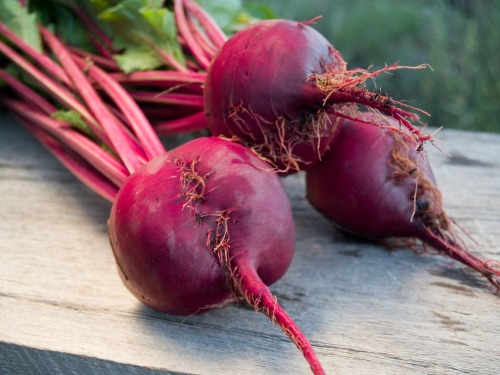
2. Broccoli
Broccoli is a very hardy vegetable, and you can typically have two crops per season (spring and fall). It needs at least six hours of sunshine each day, so plant the seeds where they will get the proper sunlight.
Broccoli seeds need to be planted at least 18 inches apart and in rows that are 24 inches wide. If the rainfall doesn’t cover them, they need almost 1.5 inches of water per week.
The ideal temperature for broccoli is between 65 and 80 degrees. The soil must be well-drained for the best growth. To be sure about the soil, have it tested or purchase a soil kit.
Watch for the flower head beginning to form in the middle of the plant every day. If the buds start to turn yellow, cut the head from the stem. You will still see small shoots that are great to harvest.
pH level for Broccoli: 6.0-7.0
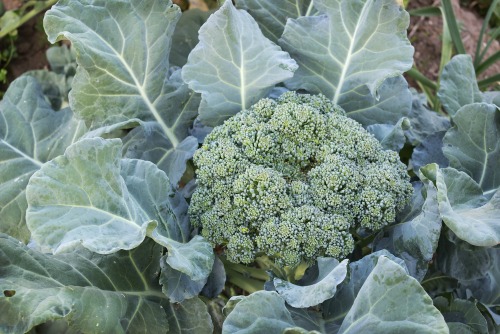
3. Carrots
Carrots like smooth, loamy soil with nutrients added, as shown above. I like to moisten the soil slightly, sprinkle the seeds over it, and cover them with compost.
Keep the rows about 3 inches apart and stagger, planting the seeds over two to three weeks to have an abundant harvest for the season.
Be careful if you live in intense heat, as carrots don’t like to dry out. If you water them by hand for two to three weeks after planting the seeds, you will soon see little sprouts.
This is when you will fertilize with some Miracle-Gro Fertilizer and thin the carrots as needed. Use mulch to cover them if you live where the summers are extremely hot.
pH level for Carrots: 5.5-7.0
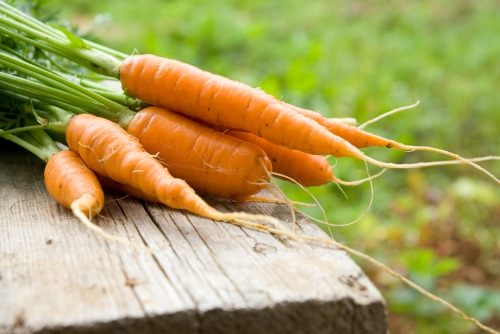
4. Cauliflower
Cauliflower is a cool-season crop; however, it’s a bit more temperamental than broccoli. The trick is having consistently cool temperatures to produce crops with larger heads like those grown in coastal neighborhoods.
Cauliflower likes temperatures around 60 degrees. If the temperatures get too hot or cold, it stresses the plants and produces tiny buds.
Plant the seeds about 18 inches apart with rows 30 inches wide. Cover the seeds with soil and compost. Water the seeds gently.
When the cauliflower heads are about two inches in diameter, cover them with their leaves, if possible, to shade and protect them. Ideally, the head will grow to 6-7 inches in diameter.
pH level for Cauliflower: 5.5-7.5
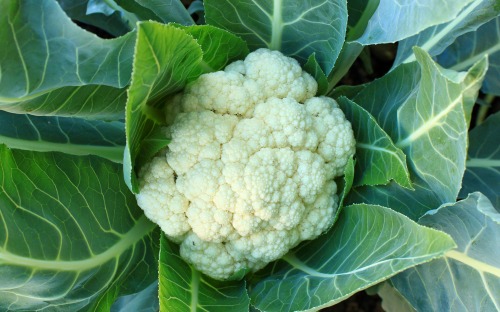
5. Celery
Because celery seeds are so tiny, you may want to mix them with sand before sprinkling them over the loamy,
Before planting the seeds, the temperatures must be at least 50 degrees F. (10 C). Cover the seeds with soil and sprinkle them with water.
They like to be planted shallowly. Once you see some sprouts, you will want to thin them. They will not tolerate a drought at all.
They need a lot of water, so keep that in mind when you plant them. Please fertilize regularly to have the best harvest.
pH level for Celery: 5.8-7.0
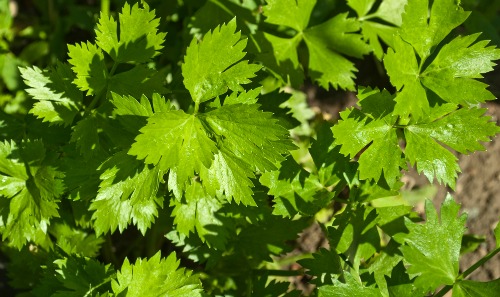
6. Lettuce
Add the amendments above to the soil where you plant your lettuce seeds. Lettuce is easy to grow and sprouts up pretty fast.
Make sure the soil is loosened, loamy, and well-drained. Lettuce loves nitrogen and potassium, so watch the leaves as they start to grow.
Work in a lot of organic matter or compost. Lettuce matures in 55 to 60 days. Romaine takes longer to mature, and so do head lettuce types.
Plant the seeds about 1/4 inch deep, tamp them in the
Seeds will not germinate in soils above 80 degrees F. or warmer. You can start some seeds indoors and transplant the seedlings into a shady spot when the weather is too hot outside.
You may want to choose heat-resistant varieties if you live where the temperatures get too hot in the summer. It’s better to pick early than late because the leaves become bitter.
pH level for Lettuce: 6.0-7.0
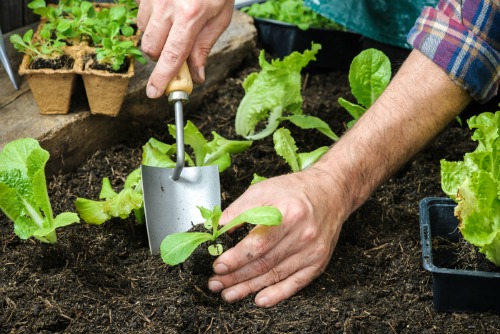
7. Onions
Plant the onion sets about one inch deep, with the bulb end facing down, about 5-6 inches apart. The onions’ growth will depend on how much sunshine they have.
“Long Day” onions need 10-14 hours of sun daily. “Short Day” onions need 10 hours of sunshine to grow correctly. “Day Neutral” onions will grow very well regardless of the hours of sun they have.
ONIONS: “Long Day”=Zone 6 and colder areas. “Short Day”=Zone 7 and warmer. “Day Neutral”=they can grow anywhere but perform better in zones 5 and 6. Consistent soil moisture and good fertilizer are key to growing the best onions.
pH level for Onions: 5.5-6.5
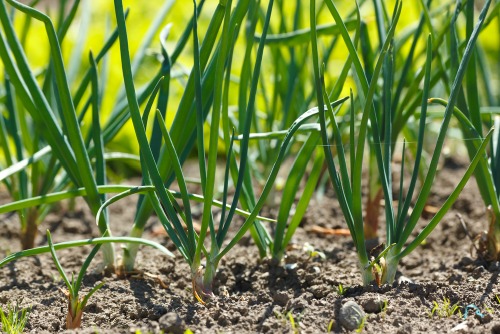
8. Peas
Peas prefer cool weather, so March is a good month to plant them. You can grow them as soon as you can work your soil. It is best if the soil temperatures are 10-20 degrees C or 50-70 degrees F.
The best time to sow peas is mid-February until the end of May. Depending on the heat, you can plant them again in July through mid-August.
If your soil is moist or damp, do not soak your peas; you don’t need to. I have never soaked my peas.
Make sure your soil has the amendments it needs. I prefer bush peas because they seem the sweetest.
My favorite ones are called Little Marvel. They only grow about two feet tall, and that works for me. They are sweet to the taste and can be harvested in about 60 days.
You may want to trellis them. Plant the seeds about 4-6 inches apart and 1/2 to 1 inch deep.
pH level for Peas: 6.0-7.5
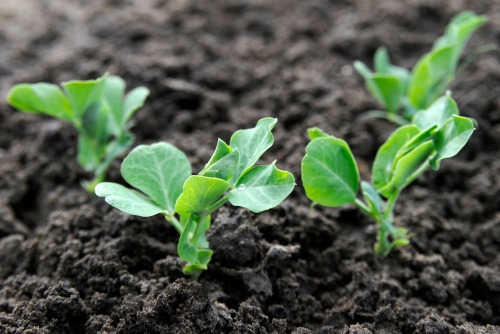
9. Radishes
I like the radish called Red Champion because it is larger and has bright red skin. It grows in small areas, and the days to maturity are 25-30.
Another one I like is Pink Beauty because its white flesh is crisp and mild. It grows well in pots or containers, and its days to maturity are 25-30.
I sprinkle the seeds over the soil, do a slight soil coverup, and sprinkle with water. If you stagger the planting days, you will have several freshly picked radishes to harvest and enjoy.
pH level for Radishes: 6.0-7.0
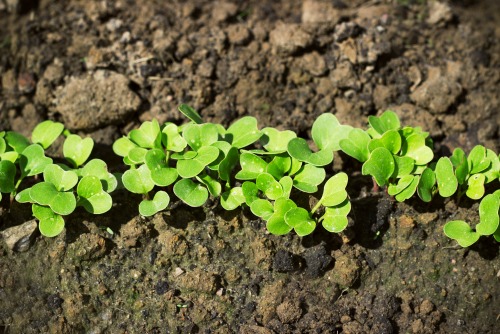
10. Spinach
I plant New Zealand spinach seeds because they can withstand the heat of Southern Utah. It’s a large-growing plant, but I make salads and smoothies and freeze a lot of spinach for the year.
This spinach variety grows from spring to fall without any issues. The more I cut it back, the more it grows. It matures in 75 days.
Here again, make sure your soil has the amendments above it and that you turn the soil over again and again. Plant the seeds at least one foot apart and the rows two feet apart.
pH level for Spinach: 6.0-7.5
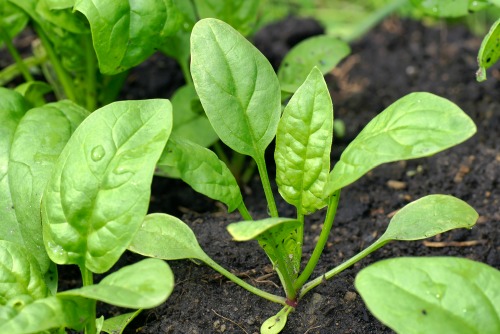
How To Hand Pollinate
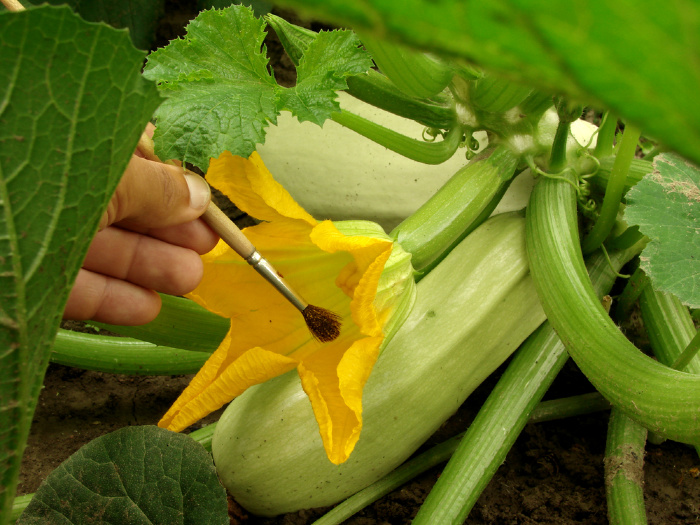
All you need is a paintbrush or cotton swab (see above). If you need to hand pollinate because you are not seeing any fruit develop, here is something you may want to try. You do this by removing the male blossom (male blossoms don’t have fruit behind them). They produce pollen, leaving the center covered in the pollen to collect with the brush or swab. Use a brush or swab to apply the pollen you collected to the center of the female flower. This works for squash, melons, and cucumbers every time.
Please Check Out What To Plant Each Month:
- What To Plant In January
- What To Plant In February
- What To Plant In March
- What To Plant In April
- What To Plant In May
- What To Plant In June
- What To Plant In July
- What To Plant In August
- What To Plant In September
- What To Plant In October
Final Word
I hope today’s post about what to plant in March inspires you to start a
Remember to look for community gardens in your area. They are great for getting to know your neighbors. I love Farmer’s Markets, but my gut tells me I need to grow food in my yard.
What are you thinking right now about raising your food? I wish I had more land, but that won’t happen. May God bless this world. Linda
Where I Buy My Seeds: SeedsNow
Copyright Images: Healthy Lettuce Deposit photos_6553021_s-2019, Pollination Artificial Depositphotos_6561815_S By DLeonis, Baby Spinach Depositphotos_5968897_S By Mirage3, Radishes In The Garden Depositphotos_74279029_S By OksanaYasiuchenia, Young Green Pea Plants Depositphotos_9938286_S By Muzsy, Onions In Vegtable Garden Depositphotos_5588487_S By Erierika, Lettuce Being Planted Depositphotos_59807659_S by Alexraths, Celery Leaves Depositphotos_3814864_S By Ksena32, Cauliflower In the Vegetable Garden Depositphotos_32133759_S By SlavicaPopovska, Lush Cabbage Broccoli in the Garden Depositphotos_50104863_S By Sever180, Fresh Beets Depositphotos_7524898_S By MonaMakela

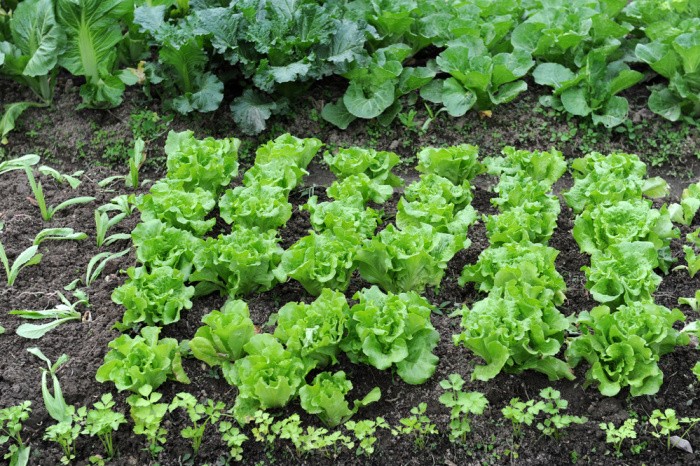

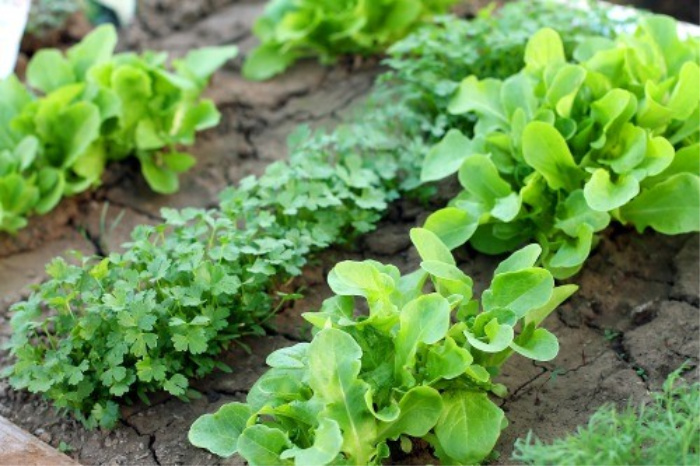
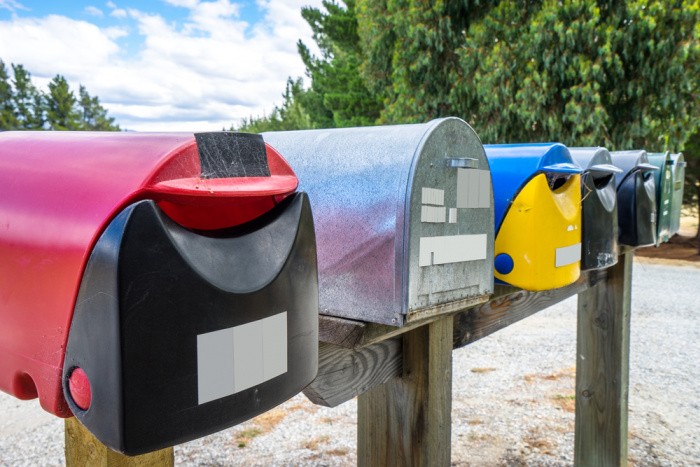
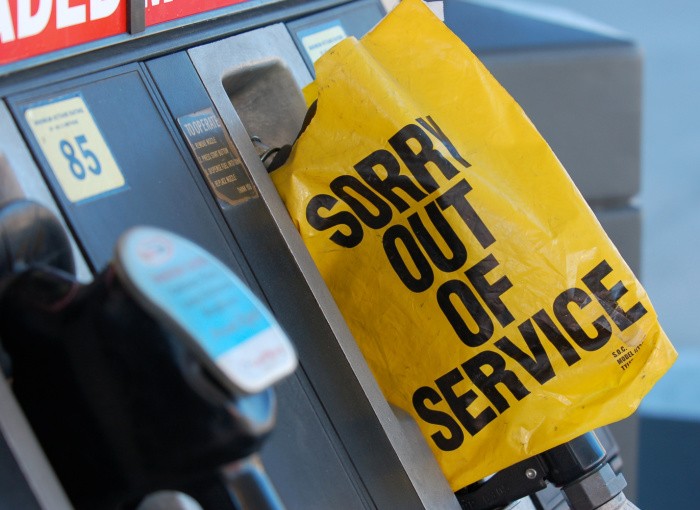
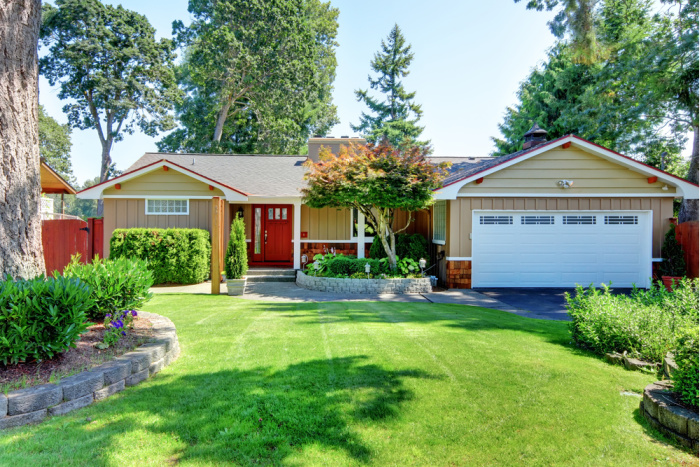
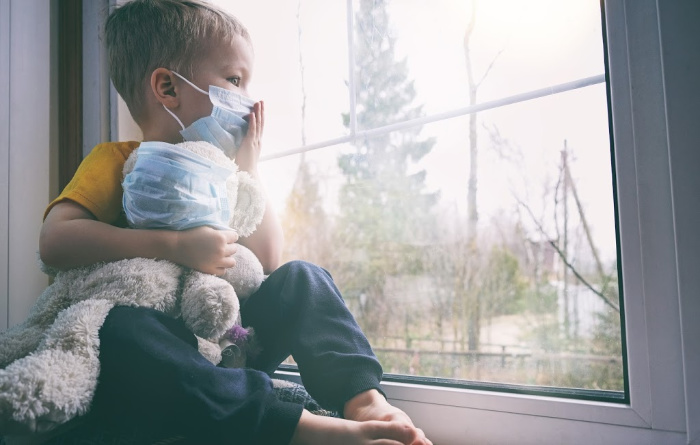
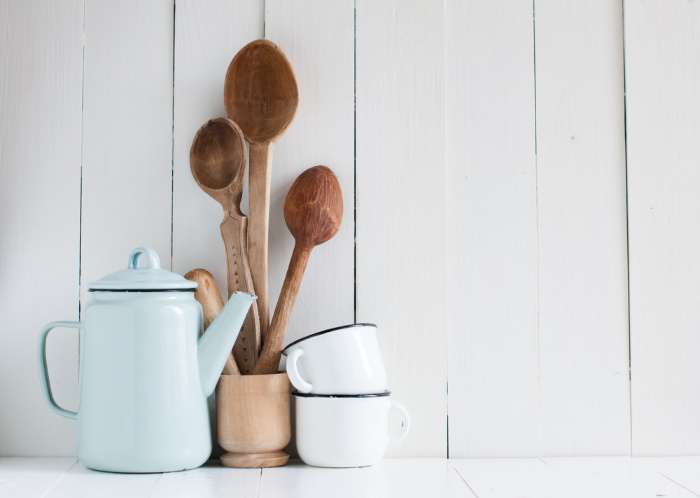
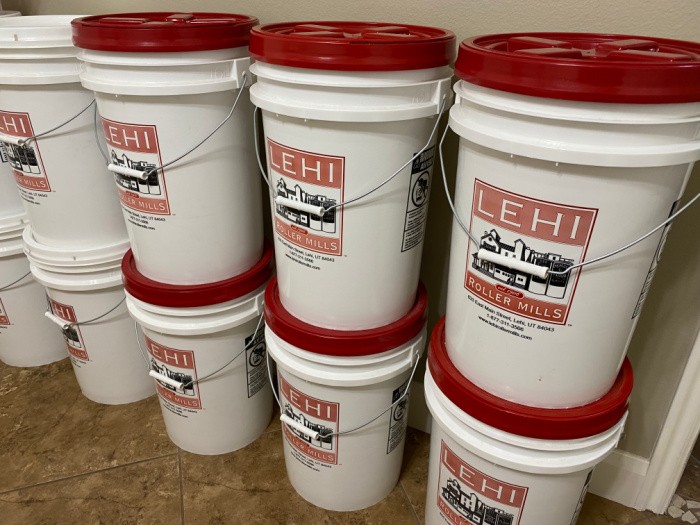
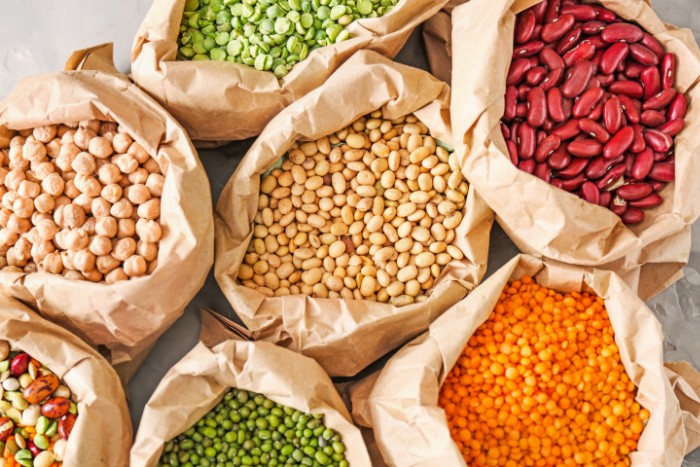

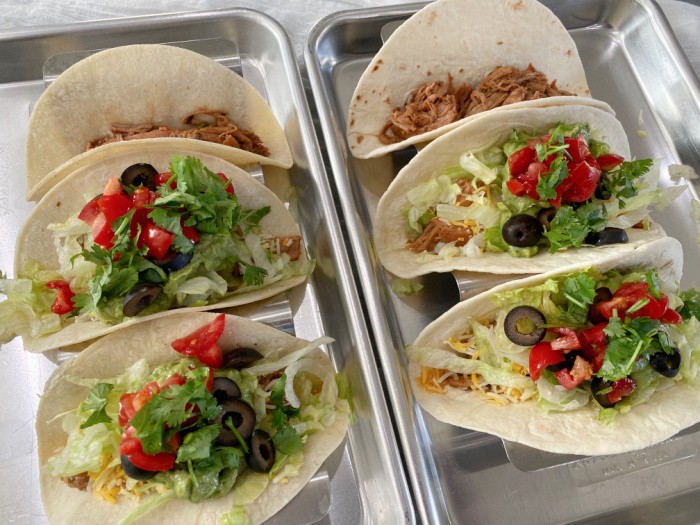
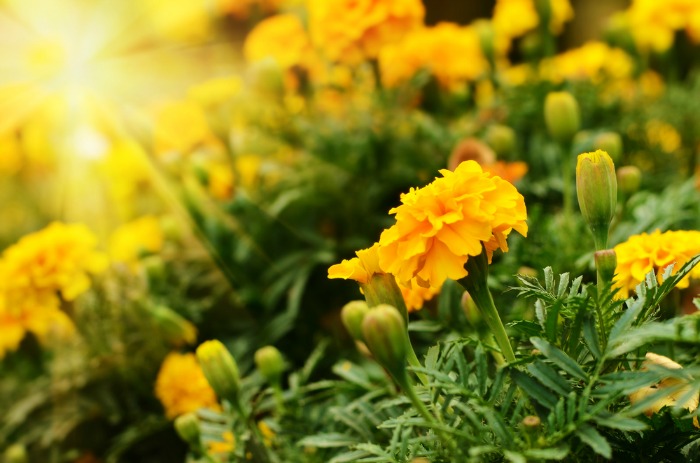
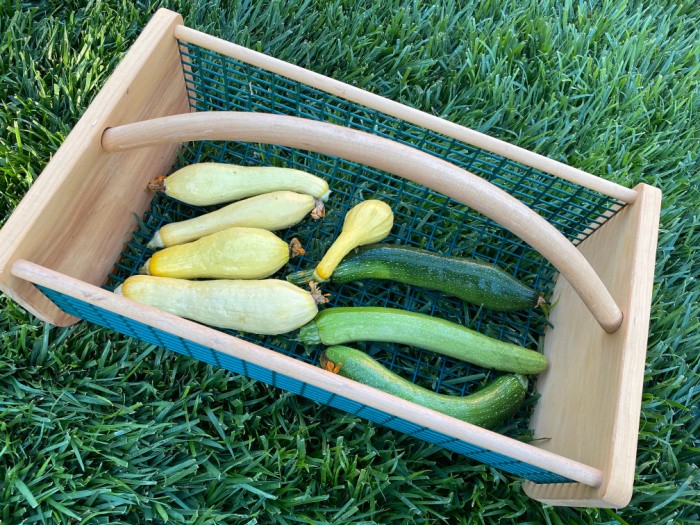
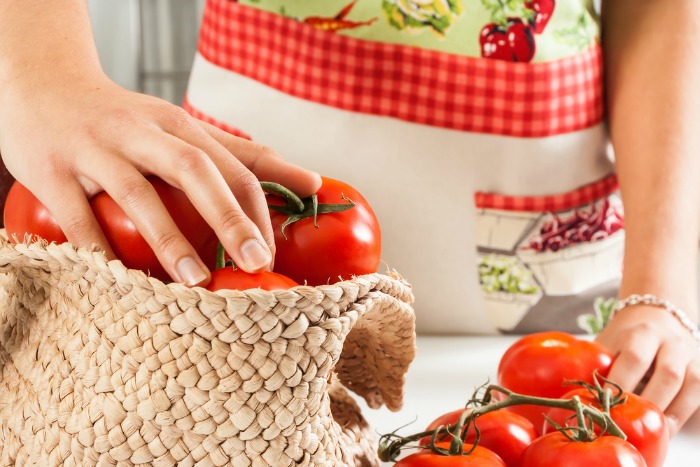
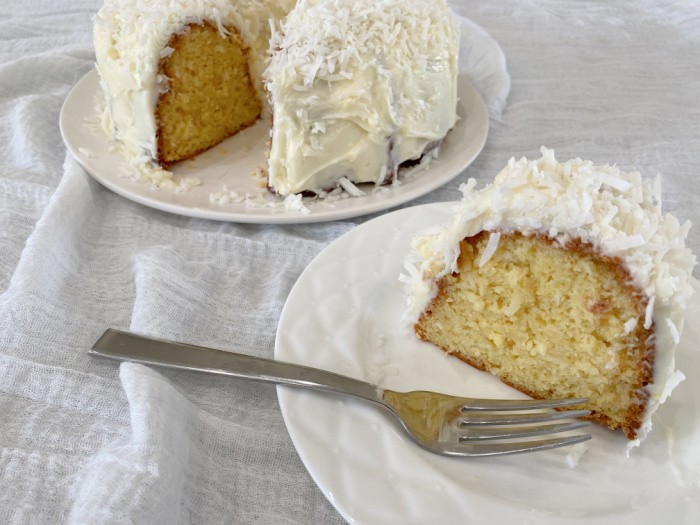





Linda, your gardening posts have been an inspiration!
I took a class in February on “Starting Seeds”. Have been trying my hand at that. So far have tons of little cherry tomatoes, some yellow squash and a single Ukranian tomato sprouting. I started more tomatoes, roselle and herbs yesterday. Will be starting cucumbers and a different squash later in the week.
I am recycling some old animal feed troughs into container gardens this year. One has 4 divided areas, the other is 10′ long, 2 ft wide and 2 ft deep. Hubby drilled drainage holes in these, then I added a few inches of gravel and the homemade garden or potting soil that’s much better than storebought.
In the smaller trough, I’ve transplanted bibb lettuce and direct seeded radishes, beets and a leaf lettuce blend. All are growing nicely.
In the 10 ft long trough, I planted garlic bulbules ( seeds), a nice selection of mixed carrots and then more garlic cloves. I think the garlic seeds will take 2 years to produce, so I added garlic cloves so we should get a harvest this year, too.
I will be trying potatoes again and sprouting a couple of sweet potatoes indoors so I can have starts in a new raised bed this month. And I am trying Jerusalem Artichokes (Sunchokes) this year.
Happy gardening from NW Florida!
Hi BDN, oh my gosh, what a great idea on the animal troughs!!! I love it! Oh, it makes me so happy to hear you are have seedlings growing! Life is so good when we grow our own food! Linda
On amending the soil, how large are the raised beds that you are adding this combination? Thanks Nina
Hi Nina, my raised garden beds are 4-foot by 4-foot and 18-inches deep. Happy gardening, Linda
Got the family garden plowed and tilled last weekend while it was 70. Now I’m waiting on the ice storm to be done so I can start lettuce in the ground.
I’ll be starting my seedlings in the house this week too.
Hi Matt, SQUEAL!! I love hearing this!!! Lettuce is so easy to grow and it’s so fresh!!!!! Yay for gardening!!! Linda
Hi Linda! I’m not the gardener in the family, but the husband got seeds started indoors last week. We are already seeing little green plants poking through the soil. I can’t wait for spring and I can’t wait to start canning again. I really love to do that. Also, on this very cold winter day, I just opened a jar of peaches that were canned last summer. They sure beat the store-bought stuff!
Hi Paula, oh my gosh, I love hearing you can see the green poking through in the plants. Oh, my gosh there is nothing better than home-canned peaches! Life is so good! Linda
I have tried gardening a few times. I don’t have a Green thumb. My family says I have a black thumb, the thumb of death. I stay out of the garden. I may point and let them them know what I would like. I am pretty much banned. I do graze sometimes when no one is around. I am the chief cook and bottle washer. I think I will make my husband a cold frame this spring. He is the avid gardener.
Hi Mary, hey, that works, he can garden, and you can cook it! Wow, a cold frame would be awesome!! Love that kind of thing! Linda
Linda,
I’m in Zone 8b, but as you know I’ve been harvesting cool weather crops I planted last Fall all winter. It’s time for me to plant more of them but we’re getting lows in the low 20’s at night now so I’ll give it few more days. Usually the plastic covers over my PVC hoop houses keep the soil temperatures warm enough for me to plant cool weather crops from September through March, but with those lows I’m not going to chance it.
Next to adequate moisture, the most important thing for proper germination is soil temperature. For cool weather crops it’s best if the soil temp is above 45F and 50F or more is best. For warm weather crops I’ve found a soil temp above 55F works but around 60 or even 70 is best (especially for tender crops like cucumbers and tomatoes).
Hi Ray, crazy weather, I hope you can plant soon! It’s cold here as well. Linda
Welp we gonna try everything again. I’ll be preparing the soil after the next snow and hopefully we will have moisture and not 110 degree heat again this year.
HI Matt, I hear you on that! We used to be able to “predict” when we could plant, but times have changed! Linda
Linda,
My asparagus is up and providing meals. Finally starting to get a few snow peas. Still harvesting Jericho (Romaine) and Red Ice Head lettuce I planted last fall. Same for Kuroda and Scarlett Nantes carrots, Bright Lights Swiss Chard, Matador Spinach, and Danish Ballhead Cabbage. Bok Choi has all bolted, so I’ll harvest those seeds for later planting. I’ve planted more and it’s up and thriving. My celery is looking poorly but handing in there. I have tomato, squash, melon, potato, broccoli, and more celery started indoors.
I’m in the process of raising the height (well depth really) of one of my 4’x16′ raised beds from 16″ up to 32″ and I’m doing Hugultur in that bed to continue Improving soil fertility and moisture retention. It’s hard labor, digging out all the soil and replacing the now corroded hardware cloth on the bottom before installing the new corrugated sheet metal sides and adding layers of small logs and branches, then leaves and twigs, compost and replacing all the soil–plus adding more. But when I’m done I’ll have 18-20″ of good, loamy soil on top of the decaying compost and wood to keep my soil healthy for years to come.
In addition to my own homemade compost, I’m adding DR Q’s Fully composted, filtered, and weed free steer manure. Dr Q’s products are some of the best I’ve used, but then they are made specifically for desert gardeners.
When I have 12″ of soil laid in half of the bed, I’ll be planting those Clancy potatoes I started from seed inside. Then as they grow, I’ll keep adding soil and mounding them. This bed will be hand watered until I get to within 2″ of the top–when I’ll reinstall my soaker hose manifold and small bark chip mulch. (Can’t use straw as mulch due to our winds).
Hi Ray, you know I love hearing what you do in your garden and what you grow. I hope to get those 32 inch high raised beds. 4″ by 16′ would be my dream!! Linda
Oh, I’ll plant Contender or Dragon Tongue bush Beans in the other half of that bed.
Having that bed up that high will seriously save my back when tending the crops.
Hi Ray, I agree the garden has to be taller or its too hard on our backs. I will look into those beans, love it! Linda
Linda, those two bean varieties, along with Provider and Anasazi, have been my most reliable producers. I have yet to find a wax bean that does well here, but I keep trying.
I like the 4′ width because in our intense heat that width means the sides don’t dry out as fast as they would with a 2′ bed width. As for the 16′ length–I have 5 of those beds, a couple of 4×4 beds and 12 very large pots to plant in.
One of those large beds is dedicated exclusively to Purple Passion Asparagus. Another right now if full of Snow Peas that are in bloom. A third has lettuce, cabbage, bok choi, carrots, chard, spinach and a different variety of snow peas. a fourth bed is idle except for some celery and spinach. The fifth large bed is the one I’m working on raising the side, so it’s idle. One of my 4×4 beds has beets and more carrots in it. The other 4×4 is idle and so are all the pots–most of which are awaiting transplants from the broccoli, celery, tomatoes and other goodies I’m growing inside.
When you get your raised beds set up and before adding anything inside it please remember to line the bottom with hardware cloth to keep the tunnelers out of your garden. I used 1/2″x1/2″, which has worked so far, but 1/4″x1/4″ would be even better.
Hi Ray, oh my gosh, I would love some 16 foot by 4 foot raised garden beds, that would be a dream for me. WOW. You really are amazing because its hard to have a garden in the desert, we both know because we both have done it. You are still growing food in the desert and it does take experimenting and patience. But it’s so worth it!! Gardening is so relaxing to me, I used to love to go outside and just admire my garden, there is nothing better! BOnus, that first red tomato, bring on the bacon! Linda